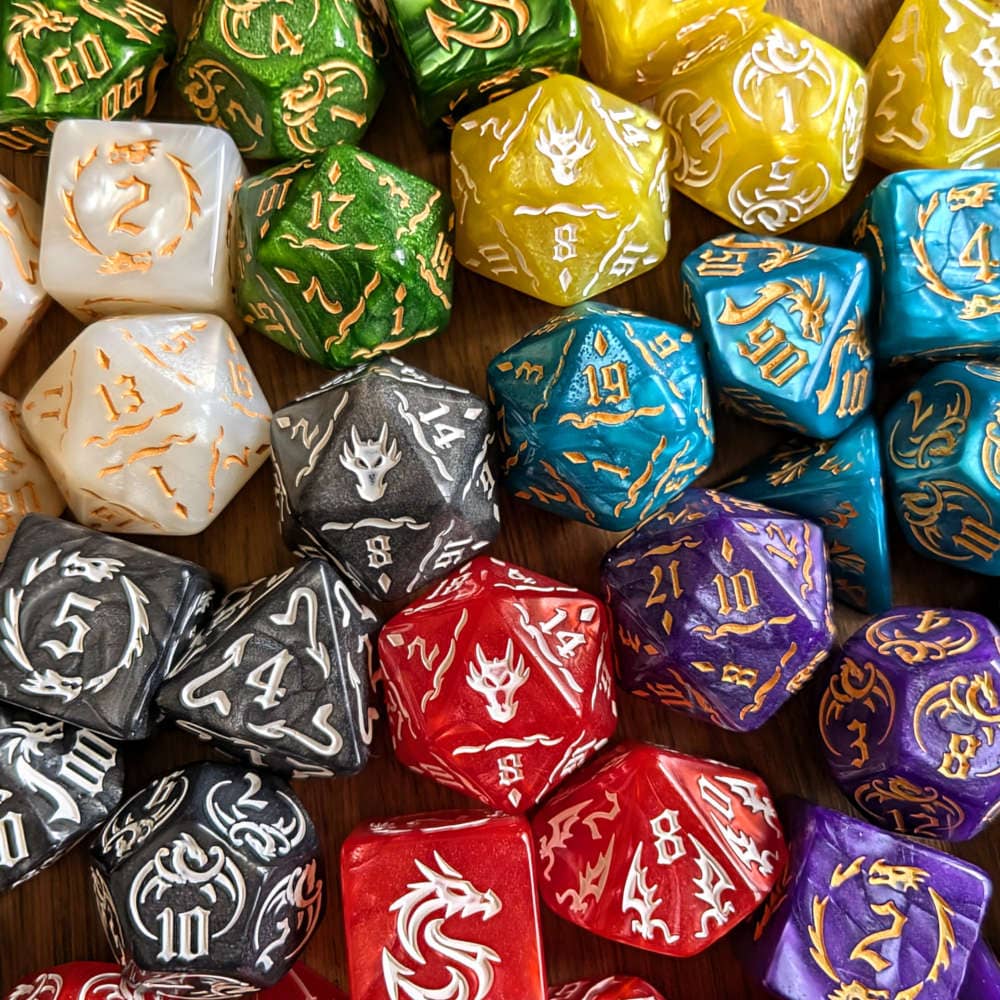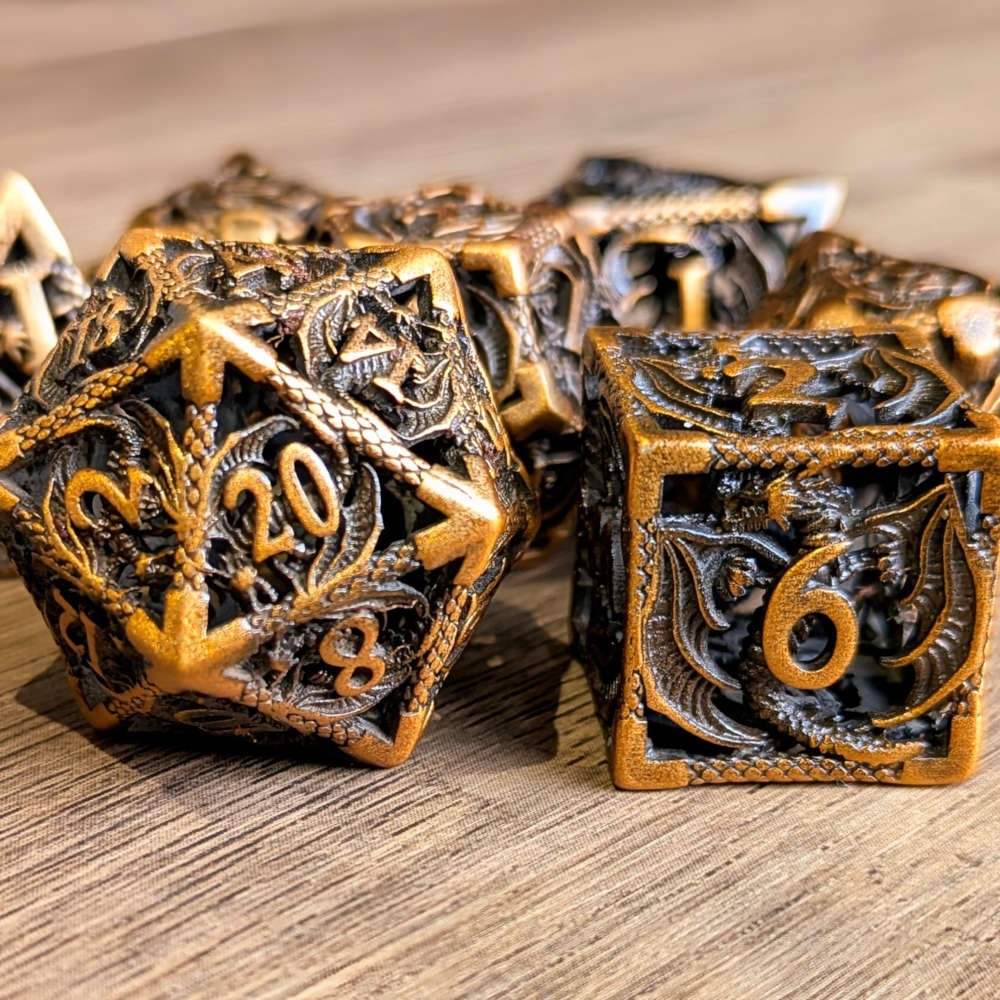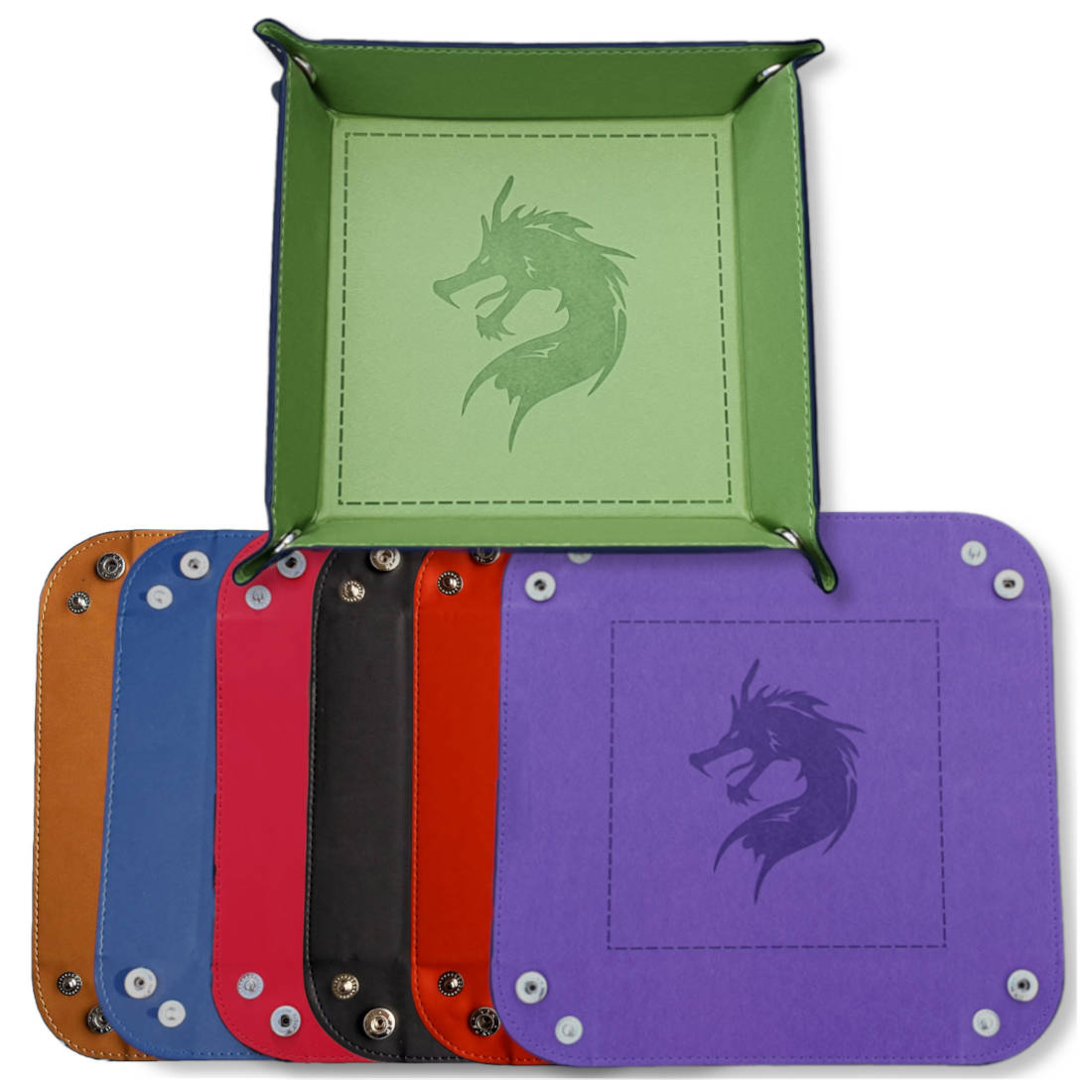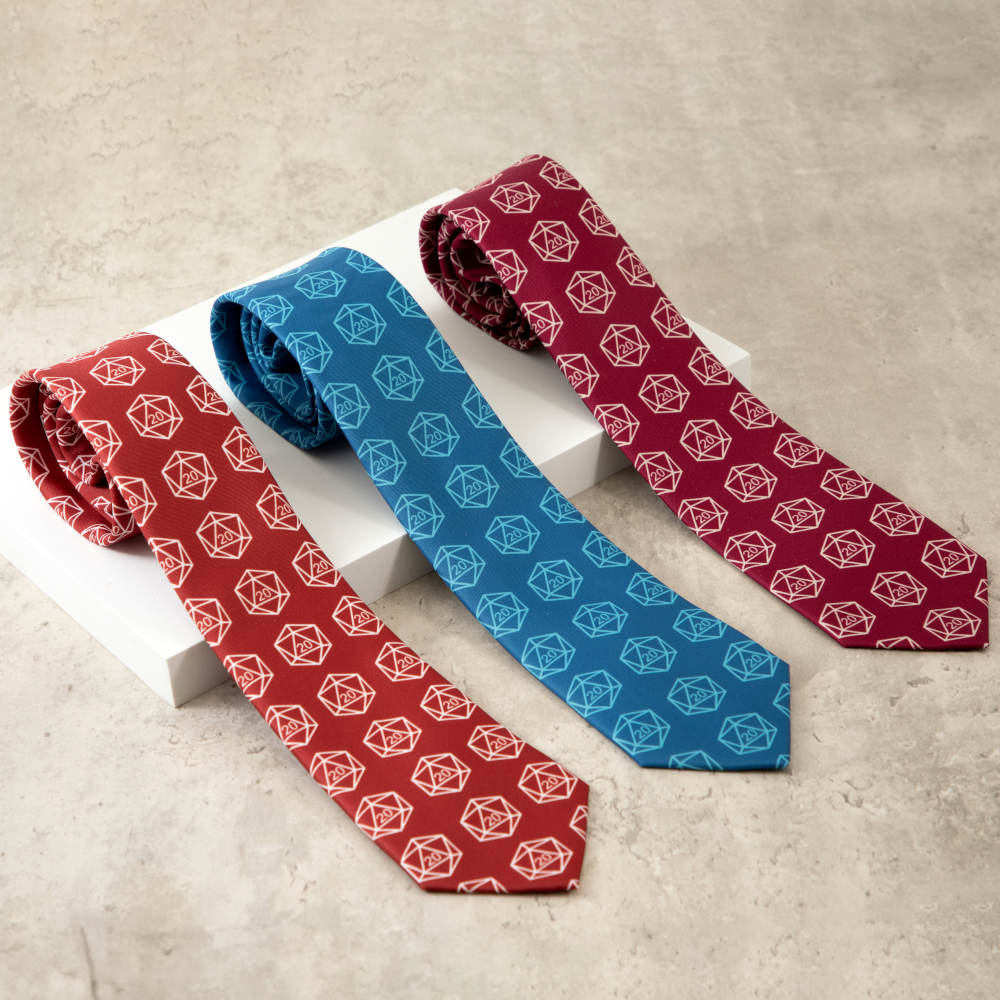How to roll a D100
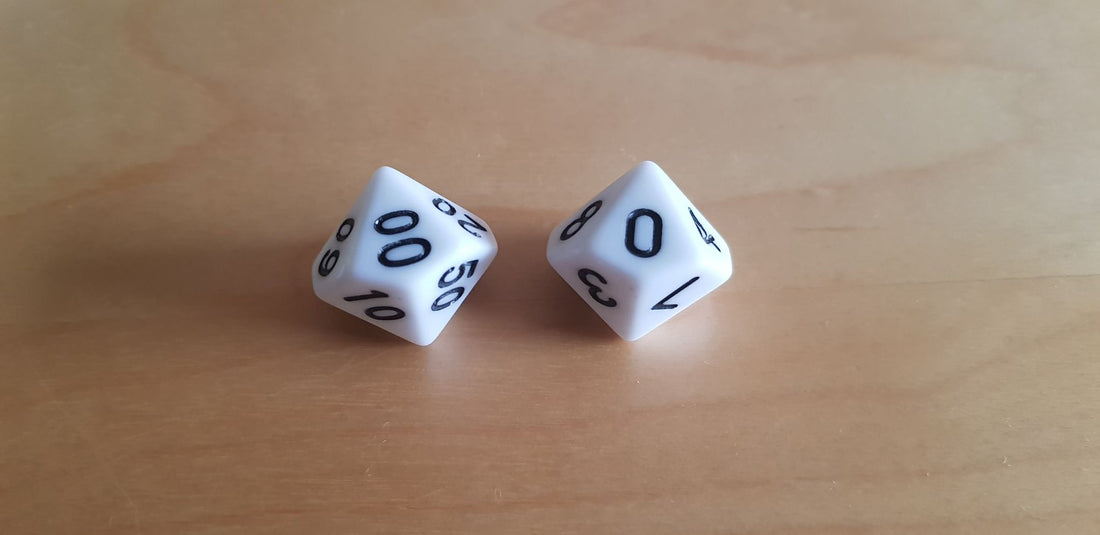
Dice are integral to the gameplay of Dungeons and Dragons. A variety of dice are used to determine the outcomes of some situations that our characters find themselves in, including d100 or percentile rolls.
But did you know you might be rolling percentile dice wrong? We’ll explain all you need to know about how to roll and read percentile dice in this guide.
What is a D100?
There are two different answers to this question. The one you’re probably thinking of is percentile dice, consisting of 2d10 (two d10 dice). One of which is labelled with every single-digit number from 0-9, and the other for the tens place 00-90. The other is a one hundred sided dice also called a zocchihedron, which we’ll talk about later.
How to read percentile dice
Let’s run through some examples of how to use percentile dice. If you need to roll a d100, here's what you should do:
Roll 2d10 together and add together the results. It's as simple as that! Here’s some examples of how rolling a d100 works in practice:
- 20 and 1 = 21
- 70 and 3 = 73
- 90 and 9 = 99
Sounds easy, right? But there’s something which you might not know, which might mean you’ve been rolling percentile dice wrong.
What does 00 mean on percentile dice?
This is the confusing part, and where some people go wrong when they roll a d100. There’s a lot of debate in D&D communities about how to read 00 on a d100 roll.
Using the addition method we explained above, you might assume that 00 + 0 = 0.
Technically, you’re right. But think about it... you can’t roll 0 in D&D! The point of rolling a d100 is that you will roll an outcome on a 1-100 scale. But, if you assume a d100 roll of 00 and 0 is 0, you’re not rolling on a 1-100 scale, you’re actually rolling on a 0-99 scale.
This doesn't quite make sense. You can't roll 0 in D&D. This is confirmed in the official rules.
What is 100 on a d100?
A roll of 00 and 0 is 100. When rolling die, you can't roll 0. For example, when you roll a d20, the lowest you can roll is a 1 and the highest a 20. This principle is the same for all types of dice used in D&D, including when you roll a d100.
According to the D&D 5e Player’s Handbook (page 6):
“Two 0s represent 100. Some ten-sided dice are numbered in tens (00, 10, 20 and so on), making it easier to distinguish the tens digit from the ones digit. In this case, a roll of 70 and 1 is 71, and 00 and 0 is 100”.
If you’re still not convinced, then know that this rule is ancient. In the Original D&D Monsters & Treasure book written in 1974, a magic item tables states that 00 and 0 on percentile dice means 100.
Percentile dice chart
It can be tricky to find a d100 roll chart that follows the correct rules, as many tell you different ways for reading d100 rolls. We’ve made a handy percentile dice chart for you which should help settle any disputes around how to roll percentile dice in D&D.
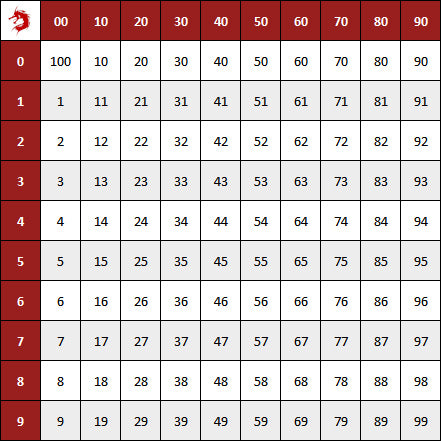
If you’re ever confused about rolling percentile dice, then the above chart will set you straight.
What are percentile dice used for?
In DND 5e, percentile dice have several uses. They are used by a Wild Magic Sorcerer to roll on the Wild Magic Surge table, and by a Cleric to roll for Divine Intervention. A Dungeon Master (DM) might also roll percentile dice from time to time to choose a random outcome for things such as encounters, items, loot, or anything else they want randomness to assist in.
There’s nothing more fun as a DM than asking your player to roll a d100. And there’s nothing more fun as a player than rolling a 100! There are many random loot and encounter tables out there that use a d100. There’s even a community called r/d100 who create d100 tables for all sorts of purposes.
Other TTRPG systems use percentile dice, or 2d10, for skill checks instead of a d20. If you'd like to learn more, check out our guide that explains why D&D uses a d20 system.
Are percentile dice fair?
Each of the faces on a d10 are the same shape and size. This means that percentage dice are fair and safe for use at your gaming table. Unless your dice are misshapen, dented or biased, rolling 2d10 will give you a fair and randomised outcome.
Is there a 100 sided die?
A d100 die, also known as a one hundred sided die or a zocchihedron, is quite the sight. It is similar in size to a golf ball. These are quite uncommon at D&D and TTRPG tables, however, but they are marvelous sights and increasingly common in the collections of dice goblins and dice dragons.
How to read a d100
The great thing about a d100 die is that it has every single number from 1-100 so when you roll, you don’t need to do any calculations. Simply roll the zocchihedron and the number that shows up is the number you use. It might be difficult to read the outcome, so we recommend using a dice tray to roll on a flat surface.
Are d100 dice fair?
Whether zocchihedron dice are fair or not is a hot topic of debate amongst the tabletop community. There are lots of different zocchihedron designs and styles available, so it's hard to say definitively whether they are fair or not.
By design, a zocchihedron is not perfectly symmetrical as more numbers are wrapped around the equator with fewer around the poles. Generally speaking, they are not fair dice, and do not produce fair outcomes. If you want true randomness when rolling dice, then it might be best to stick to rolling 2d10.
One brave soul decided to put this theory to the test. The little known Jason Mills test sought to establish whether a zocchihedron produced a fair and random distribution of rolls. This test of 5,164 rolls gave a mean roll of 51.64 and found that numbers below 8 and above 93 are rolled less frequently than they should be.
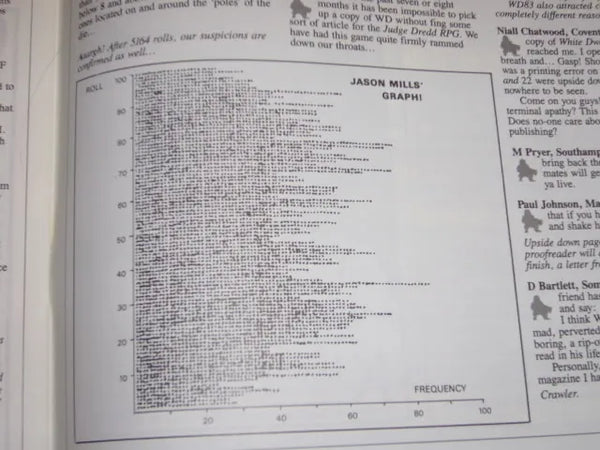
After this test was published in a magazine in 1987, some companies redesigned their zocchihedron die so that higher and lower numbers were redistributed more evenly across all parts of the die.
If you’re in a serious game that wants fair and accurate dice rolls, then you should probably give the d100 a miss and use 2d10 as percentile dice instead. However, d100 dice are very fun to roll, and if you play in-person then your players would likely enjoy the chance to roll a zocchihedron!
How can I ensure my d100 die is fair?
If you decide you'd like to use a zocchihedron instead of 2d10, then there are some steps you can take to make sure you are more likely to purchase a fair die:
- Buy from a reputable source: purchase from a trustworthy seller or reputable store to ensure quality.
- Saltwater balance test: if you have the patience to collect a large enough data set, you could try the saltwater test which is the most common way of checking whether your dice are balanced.
- Use a dice tray: roll your d100 on a flat surface such as a dice tray or dice scroll of rolling to minimise the impact of uneven surfaces on the dice roll.
- Storage care: organise and store your dice safely to protect them from damage and preserve their fairness.
Remember, a fair die enhances the gaming experience, ensuring that the outcome of each roll is truly left to chance.
D100 dice to help on your adventures
Now you know not just how to roll d100 dice, but also how to read percentile dice. If you want to read up more, check out our guide that explores the different sizes of dice available. It explains the standard sizes of dice used in a variety of tabletop games.
Another die that is deceptively tricky to read is a d4! There are several styles of four-sided die available, so make sure you check out our guide to rolling and reading d4 to stay in the know.
If you’re looking for new dice, percentile dice (2d10) are included in our DND dice sets. We have a range of exquisite sets suitable for any fantasy adventure.


